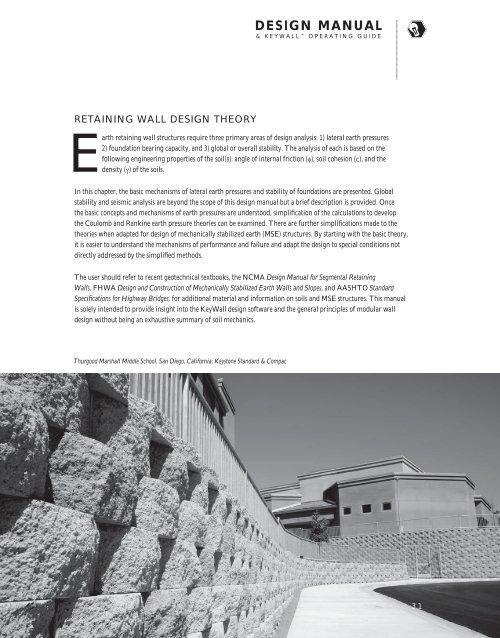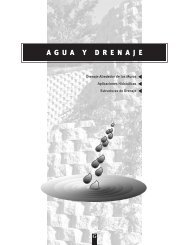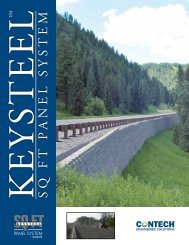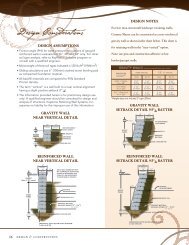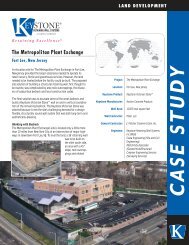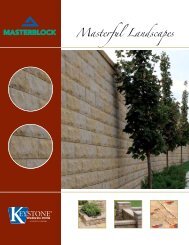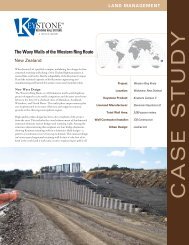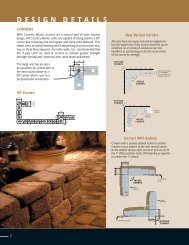Download - Keystone
Download - Keystone
Download - Keystone
You also want an ePaper? Increase the reach of your titles
YUMPU automatically turns print PDFs into web optimized ePapers that Google loves.
DESIGN MANUAL& KEYWALL OPERATING GUIDERETAINING WALL DESIGN THEORYEarth retaining wall structures require three primary areas of design analysis: 1) lateral earth pressures2) foundation bearing capacity, and 3) global or overall stability. The analysis of each is based on thefollowing engineering properties of the soil(s): angle of internal friction (φ), soil cohesion (c), and thedensity (γ) of the soils.In this chapter, the basic mechanisms of lateral earth pressures and stability of foundations are presented. Globalstability and seismic analysis are beyond the scope of this design manual but a brief description is provided. Oncethe basic concepts and mechanisms of earth pressures are understood, simplification of the calculations to developthe Coulomb and Rankine earth pressure theories can be examined. There are further simplifications made to thetheories when adapted for design of mechanically stabilized earth (MSE) structures. By starting with the basic theory,it is easier to understand the mechanisms of performance and failure and adapt the design to special conditions notdirectly addressed by the simplified methods.The user should refer to recent geotechnical textbooks, the NCMA Design Manual for Segmental RetainingWalls, FHWA Design and Construction of Mechanically Stabilized Earth Walls and Slopes, and AASHTO StandardSpecifications for Highway Bridges, for additional material and information on soils and MSE structures. This manualis solely intended to provide insight into the KeyWall design software and the general principles of modular walldesign without being an exhaustive summary of soil mechanics.Thurgood Marshall Middle School, San Diego, California; <strong>Keystone</strong> Standard & Compac3.1


